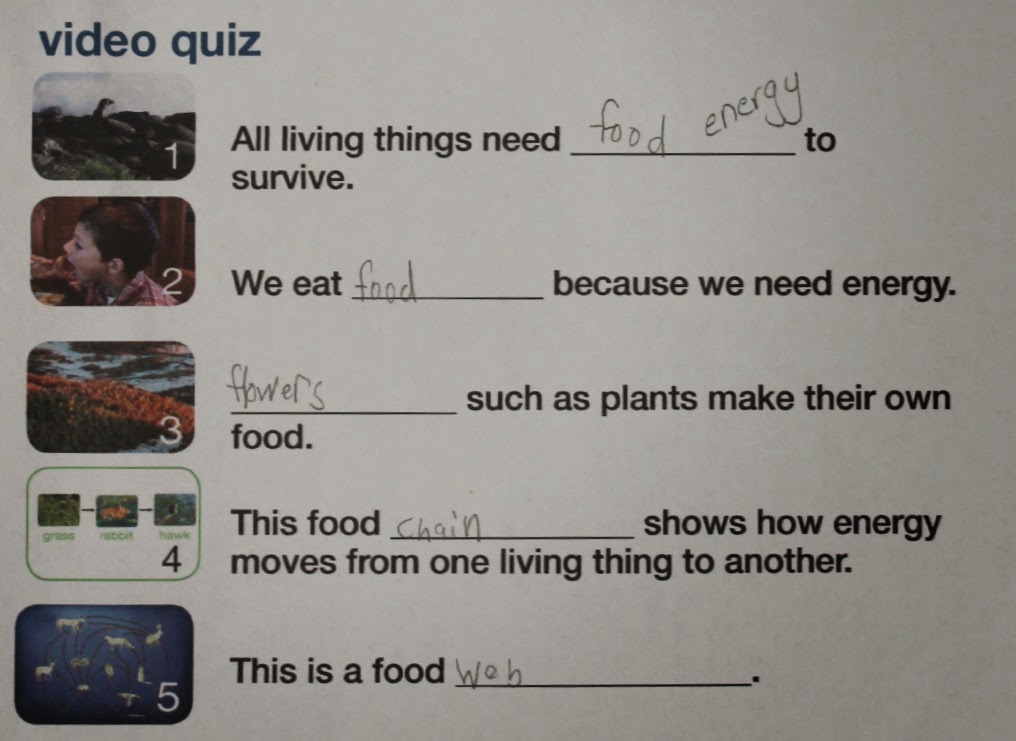
When looking at all the subjects I teach, science seems to be the one that's most flexible in terms of meeting each child's specific learning style. One of my children has always done well with textbook based science curricula, but two others have not. Science experiments work well for hands-on and visual learners, but I often feel like I need to teach my children more information than just what can be shown in an experiment or demonstration done in my kitchen.
Visual Learning Systems uses science videos and corresponding written work to teach all sorts of science concepts. Their Digital Science Online program works for students of all ages with an Elementary Edition for grades K-5 and Secondary Edition for grades 6-12.
Lauren and I have been exploring topics in the Elementary section, choosing some topics from the K-2 collection and some from the 3-5 collection. For part of the review period we used the program as our complete science curriculum. Later, I created a unit study using Digital Science Online materials that corresponded with other study materials that I already had on hand.
As a stand alone curriculum:
The Elementary Edition is divided into primary and elementary topics. Each is then subdivided into physical, life, earth, and health topics. Since there are so many options, I narrowed down the choices for Lauren but ultimately let her pick which topic she wanted to study first.
One of her choices was food chains. Before watching the video, I printed off the "What do you know now?" activity sheet. It had ten multiple choice questions about the topic.
She then watched the Visual Learning Systems video. Videos in the primary section are approximately ten minutes long, while the ones in the elementary section are approximately fifteen minutes long.
In addition to just watching the video, she completed a "Video review and quiz" activity sheet. At several points in the video, she was told to pause the video and answer a question on the page. After the video finished, there were five fill-in-the-blank sentences about the video to complete. If Lauren had questions about the quiz questions, I would help her find the specific part of the video to rewatch so that she could find the answer. Visual Learning Systems divides the video into chapters which made it easy to find what we needed.
All of the video sections have extra activity sheets for further review/practice of the concepts. When Lauren studied food chains, she used cut-out pictures from one worksheet to make food chains and pictures from another worksheet to make a gigantic food web.
Typically I saved the extra worksheets to do on a second day instead of rushing through the material in a single day. Finally, on the third day, I gave Lauren the "What have you learned?" page which served as a test over the material.
It took us at least two or three days to complete all of the material for a single topic.
As a supplement to other materials:
After exploring several topics by just using the Visual Learning Systems materials, I wondered how they would work if I combined them with other materials from our large collection of homeschool curriculum.
Lauren completed the "What do you know now?" worksheet for plant life cycles and watched the corresponding video. We then switched over to a series of plant growing experiments so that she could see the life cycle and so that we could practice using the new vocabulary from the video (embryo, seedling, germination, etc).
When we complete our growing experiments, we will return to the Visual Learning Systems materials to review the vocabulary and to evaluate what she learned on the final test worksheet.
I love the flexibility of using Digital Science Online with Lauren. When we're having a crazy busy week, I can let her choose a science topic of interest to learn more about and I don't have to devote much time to planning. When I can invest time in a project-based science unit, the Visual Learning Systems videos help make sure that she understands all the basic information I'm trying to teach. With over 130 different topics in the Elementary Edition, I have enough science material to last for a long, long time whether I use it as our sole science curriculum or as a supplement.
The Digital Science Online program is available at a special price for homeschool families. The Elementary Edition and the Secondary Edition are available for $99 each. Please note that there are no public performance rights included in the homeschool package.


©2009-2015 Through the Calm and Through the Storm. All rights reserved. Photos and content may not be reproduced. http://throughthecalmandthroughthestorm.blogspot.com










No comments:
Post a Comment